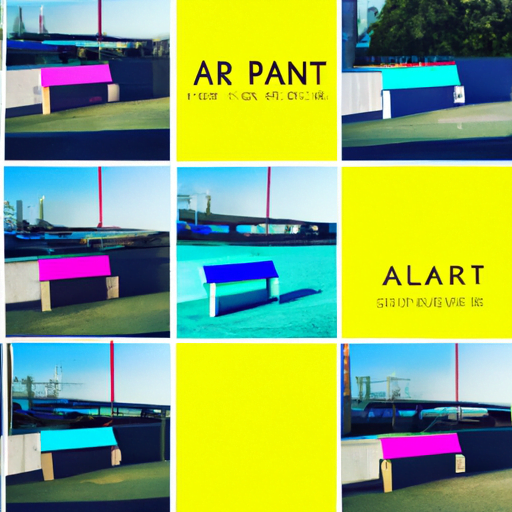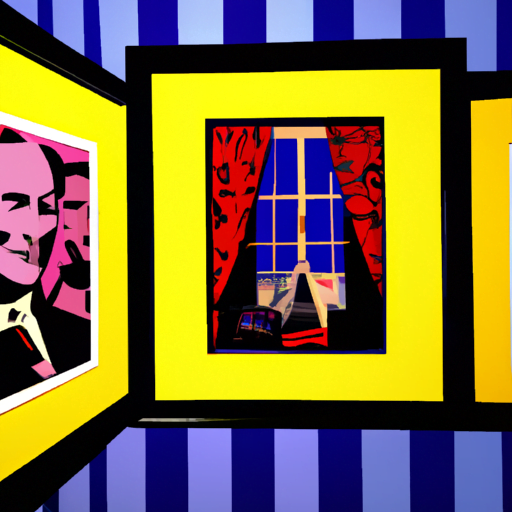
-
Table of Contents
AI and Public Art: Blurring Boundaries in Urban Design

Art has always played a significant role in shaping the identity and aesthetics of cities. From murals and sculptures to interactive installations, public art has the power to transform urban spaces and engage communities. With the advent of artificial intelligence (AI), a new dimension has been added to the world of public art. AI is not only revolutionizing the creation process but also blurring the boundaries between art, technology, and urban design. In this article, we will explore the intersection of AI and public art, examining how AI is reshaping urban landscapes and the implications it has for the future.
The Rise of AI in Public Art
Artificial intelligence has made significant advancements in recent years, enabling machines to perform tasks that were once exclusive to human creativity. AI algorithms can now generate original artworks, analyze vast amounts of data, and even create interactive experiences. This newfound capability has opened up exciting possibilities for public art in urban environments.
One example of AI’s impact on public art is the “Rain Room” installation by Random International. This immersive experience uses AI to track the movement of visitors and create a rain-free zone around them, allowing people to walk through a simulated downpour without getting wet. The AI algorithms analyze the visitors’ positions in real-time, adjusting the water flow accordingly. This fusion of technology and art creates a unique and engaging experience for the audience.
Another notable example is the “Hello Lamp Post” project in Bristol, UK. This interactive installation uses AI to enable conversations between the public and everyday objects such as lamp posts, benches, and postboxes. By texting a specific code to the objects, people can engage in a dialogue with them, uncovering hidden stories and histories of the city. The AI algorithms analyze the incoming messages and generate appropriate responses, blurring the line between human and machine interaction.
AI as a Tool for Urban Design
AI is not only transforming the creation of public art but also influencing the way urban spaces are designed. By analyzing vast amounts of data, AI algorithms can provide valuable insights into how people interact with their surroundings, helping urban planners and designers make informed decisions.
For instance, the Sidewalk Labs project in Toronto, Canada, utilizes AI to collect and analyze data on various aspects of urban life, such as pedestrian movement, air quality, and noise levels. This data-driven approach allows designers to create more efficient and user-friendly public spaces. By understanding how people navigate the city, AI can suggest improvements to infrastructure, optimize traffic flow, and enhance the overall urban experience.
AI can also play a role in addressing social and environmental challenges through public art. The “Smog Free Tower” by Dutch artist Daan Roosegaarde is a prime example. This innovative installation uses AI to create a clean-air bubble in polluted cities. The tower sucks in polluted air, filters it, and releases clean air back into the environment. The AI algorithms monitor air quality levels and adjust the tower’s operation accordingly. By combining technology, art, and environmental consciousness, the Smog Free Tower demonstrates how AI can contribute to creating healthier and more sustainable urban environments.
Challenges and Ethical Considerations
While the integration of AI and public art offers exciting possibilities, it also raises important ethical considerations. One concern is the potential displacement of human artists. As AI algorithms become more sophisticated, they can generate artworks that rival those created by humans. This raises questions about the role of human creativity and the value placed on originality in art.
Another challenge is the potential bias embedded in AI algorithms. AI systems learn from existing data, which can reflect societal biases and inequalities. If these biases are not addressed, AI-generated public art may perpetuate or amplify existing social issues. It is crucial to ensure that AI algorithms are trained on diverse and inclusive datasets to avoid reinforcing discriminatory patterns.
Privacy is another ethical concern when AI is used in public art. Interactive installations that collect and analyze data from the public raise questions about consent and data security. It is essential to establish clear guidelines and regulations to protect individuals’ privacy and ensure responsible use of AI in public spaces.
The Future of AI and Public Art
The integration of AI and public art is still in its early stages, but the potential for innovation and creativity is immense. As AI technologies continue to advance, we can expect to see even more groundbreaking installations and experiences in urban environments.
One exciting area of development is the use of generative adversarial networks (GANs) in public art. GANs are AI algorithms that can generate new images, music, and even text by learning from existing data. This technology opens up possibilities for creating dynamic and ever-changing public art installations that respond to the environment and the audience in real-time.
Furthermore, AI can enable greater community engagement in the creation of public art. By analyzing social media data and public sentiment, AI algorithms can identify community preferences and incorporate them into the design process. This participatory approach ensures that public art reflects the desires and aspirations of the people it serves.
Summary
AI is revolutionizing the world of public art, blurring the boundaries between art, technology, and urban design. From immersive installations to interactive experiences, AI is transforming the way we perceive and interact with urban spaces. By analyzing data and generating original artworks, AI algorithms are reshaping the creation process. However, ethical considerations such as displacement of human artists, bias in algorithms, and privacy concerns must be addressed. Despite these challenges, the integration of AI and public art holds immense potential for creating innovative, inclusive, and sustainable urban environments. As AI technologies continue to advance, we can expect to see even more exciting developments in the field of AI-driven public art.
